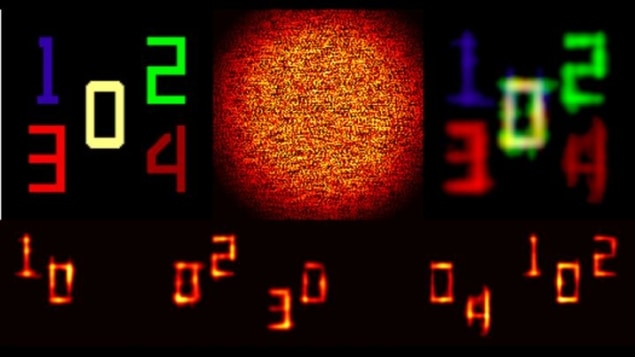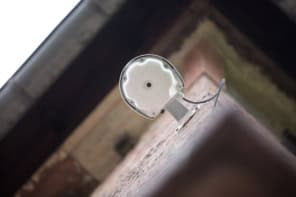
Physicists in the US have reconstructed images of illuminated colourful objects that are hidden behind nearly opaque walls. Michael Gehm and colleagues at Duke University gathered the images by encoding the light that had passed through an unknown scattering object, and then separating it into different wavelengths. Their technique could be useful for capturing spectral information in astronomy, where speckle is often caused by light passing through the Earth’s turbulent atmosphere, and in healthcare.
When the light emanating from a colourful image passes through a translucent scattering object, the paths of its constituent photons change in complex, unpredictable ways. Once the light emerges, it is distorted into apparently random speckle patterns. Various techniques allow researchers to recover original images from these patterns, but many of these require access to the image or scattering object, or prior knowledge of it. Unfortunately, this renders them useless if either object or image can’t be accessed.
This problem can be overcome to an extent using so-called memory effect (ME) imaging, which can spot correlations in the speckle patterns originating from adjacent points on the image. Yet this technique has so far been restricted to narrow bandwidths. Since different wavelengths produce different speckle patterns, it is difficult to disentangle the patterns associated with different colours from a single speckle image.
In their study, Gehm’s team took ME imaging a step further by introducing an aperture that encodes the speckle signals by blocking out specific wavelengths. A prism then separates this encoded light into different spectral channels, teasing individual speckle patterns apart by shifting them by an amount proportional to their original wavelengths. Each pattern is then collected by a monochrome camera, where an image reconstruction algorithm uses the known positions of the blocked wavelengths produced by the coded aperture to reproduce the original colour image.
In contrast to previous ME imaging techniques, Gehm and colleagues only needed prior knowledge of the aperture and the prism, and not of the image or scattering object, to reconstruct their images. Their setup allowed them to reconstruct a letter ‘H’ containing complex patterns of yellows, pinks, and blues, by separating its original speckle image into five spectral channels. In simulations, they also reconstructed an image of a cotton plant cell, which spanned the entire visible spectrum and some of the infrared.
With further improvements, Gehm’s team believe their technique could allow researchers to collect accurate spectra in situations where either the object to be imaged, the scattering object, or both, cannot be accessed. This could allow astronomers to determine the chemical compositions of distant objects from speckle images, which are distorted after passing through Earth’s unpredictably turbulent atmosphere. In addition, biologists could more easily track biomolecules tagged with fluorescent markers. This would bring about important advances in healthcare, where non-invasive monitoring techniques can be critical.
- The full results are reported in Optica



